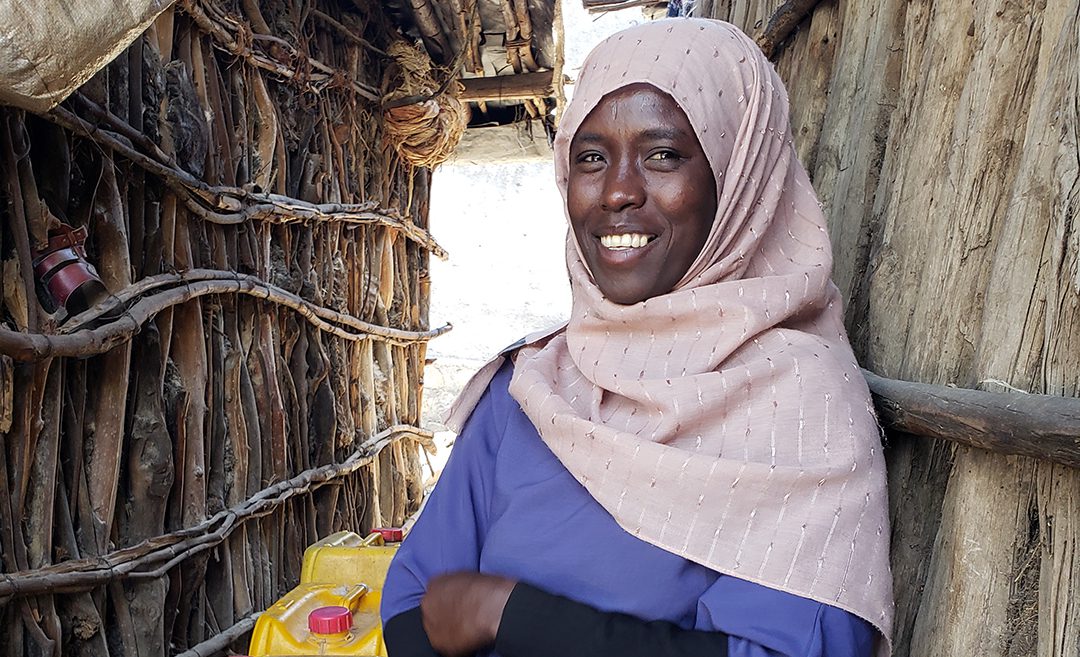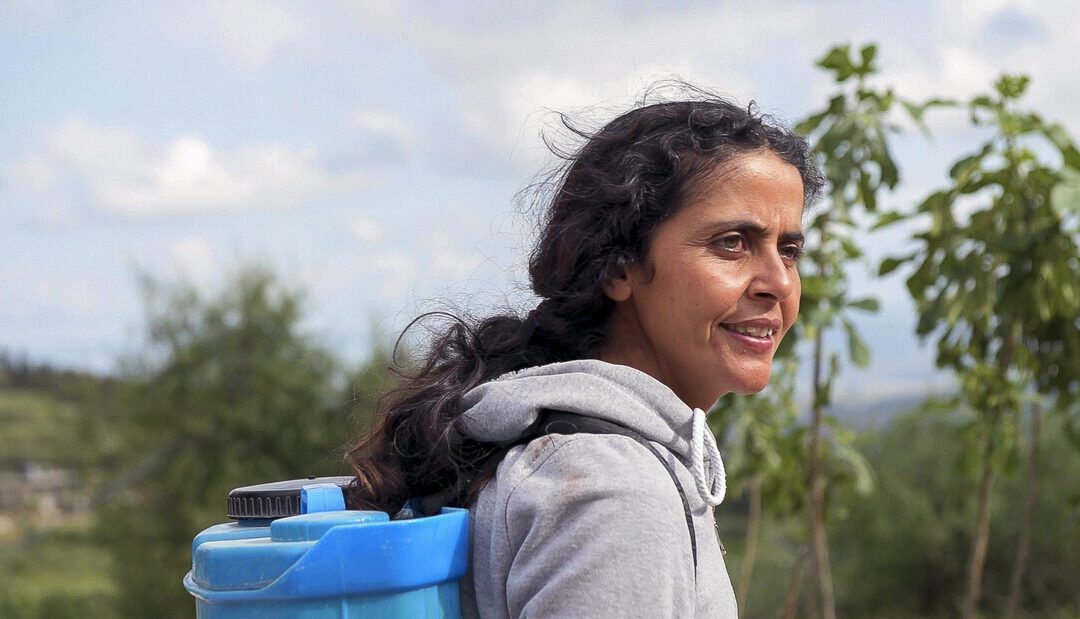By Travis Nichols, CARE USA
It wasn’t love at first sip.
Even for Ha Thi Binh, the woman now known as the “nose and mouth” of the award-winning Vietnamese coffee cooperative Ara Tay, it took some time to appreciate what was possible.
“Most of the time, if I drank coffee, it was instant coffee,” Binh said of her time before Ara Tay.
Before Ara Tay, when Binh thought of coffee, she thought of “traditional” Vietnamese coffee—the bitter, everyday taste of Robusta bean instant offset by the sweetness of spoil-proof canned milk.
That coffee has what Bon Appetit website calls the hallmark Vietnamese flavour, “the punch of strong coffee counterbalanced by honey-like condensed milk.”
But that bitter “Vietnamese” Robusta coffee wasn’t what Binh saw in Son La as she was growing up.
Like almost everyone else in Vietnam—where nearly 95% of the registered vehicles are motorcycles—Binh’s family travelled everywhere on two wheels, and as Binh rode through the mountains around her home, she saw that what had grown there for decades and what her family had farmed for generations—Arabica coffee.
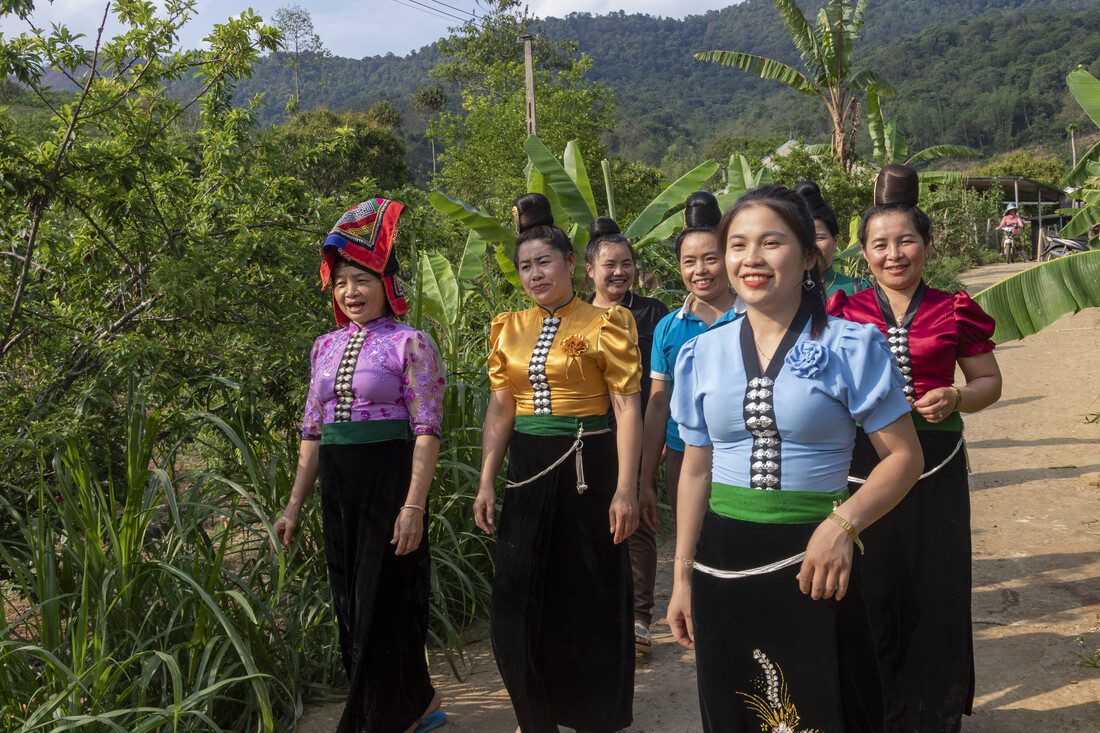

Laura Noel/CARE
The flavour of the region
Binh’s parents, grandparents, and great-grandparents harvested the fruits of these Arabica trees through the years, and they sold the unprocessed “green” coffee cherries to various outside companies, who then turned a profit on the international market.
Outside of Vietnam, people coveted the specialized taste of the temperamental Arabica bean, but it wasn’t what most people in Son La drank, and it makes up only a small portion of the total coffee grown in-country.
“The first time I tasted our own coffee,” Binh says with a laugh, “My first impression was how sour it was.”
The Son La coffee was so different from what she was used to, she didn’t even think she could finish that first cup.
But, luckily, she went back for another sip, and then another, and, then, as she savoured it, Binh tasted something new. Something that changed her life—the flavor of the region, where her people had been for thousands of years, before there was even a concept of “Vietnam” as a place.
“We’ve been living and farming on this land for so long, since the time of our great-grandfathers,” Binh says, pointing to the fields around the small, two-story building up in the mountains where the cooperative runs Ara Tay. “Our ancestors were here.”
Tradition
Over the generations, Son La’s ethnically Thai people have developed strongly-held beliefs, social norms, and cultural traditions, all rooted in the people and place.
One tradition, for example, is that a Son La wife, once she’s married, moves in to her husband’s house.
Once she’s there—with the husband’s full, extended family there, too—the new bride is expected to take on the unpaid household duties—to take care of the in-laws, the chores, the meals, and, in time, the children—all while the husband goes out into the world to earn money.
Like the traditional sweet everyday “Vietnamese” coffee, or the traditional Thai hairstyle nearly all married Son La women wear, staying home seemed like the way things go in Son La. And the way things always would be.
“Almost everyone who gets married lives with her husband’s family,” Binh says. Just like, she says, every woman who gets married puts her hair up into the tightly-wound “high bun.”
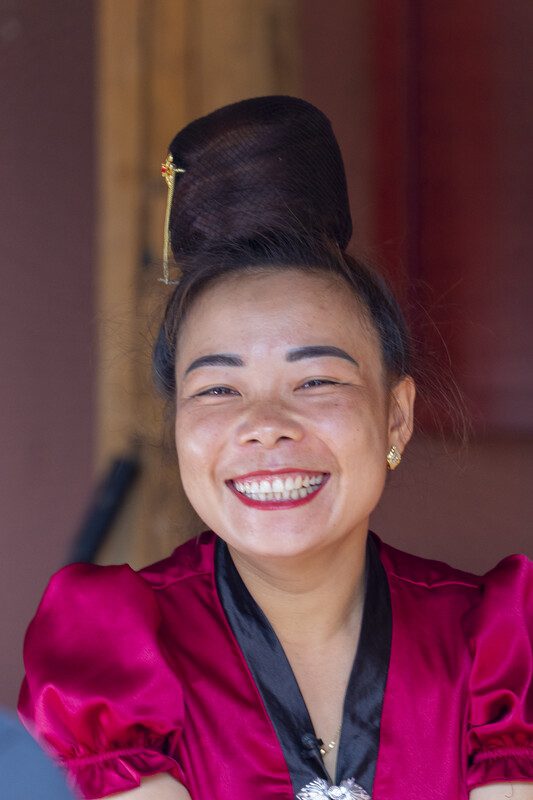

Laura Noel/CARE
“It’s an affirmation that the woman is married,” Binh says of the unmistakable hair style. “We all do it the same way.”
The high bun rises nearly six inches off the top of the married woman’s head, and for her to take her hair down in public would be considered an “unfaithful” act.
Frustratingly for the Thai women in Son La, while their culture says they should wear the high bun, their country says they have to wear helmets. Vietnam mandates it for all cyclists—but no traditional helmets accommodate the high bun.
Even though these traditions clash and force Thai women to be uncomfortable, both the high bun and motorcycles make up everyday life in Son La.


Laura Noel/CARE
As Binh grew up, all her friends and peers seemed to be putting their hair up and moving in with new families.
“My two sisters got married [and moved away],” Binh says, “but I continued studying at the university.”
Once she turned 17, she got her own motorcycle and zoomed from home to school and back again, every day—the traditional helmet still fitting, but the traditional life less so.
“What I considered more important was after I graduated—I wanted to get a job.”
– Ha Thi Binh
And a job, of course, would mean less time to take care of any household—her own, or a potential husband’s.
By the time she graduated, Binh was at a crossroads.
Enter Ara Tay
Care Canada Homepage
Like Binh, Cam Thi Mon also had ambitions. But her main obstacle wasn’t marriage or sweet milk. It was money. Specifically, how independent women could get it.
“For loans from state banks,” Mon says, “Women had to be guaranteed by families—husbands or fathers—to be eligible.”
In other words, if ambitious, independent women didn’t have a man to vouch for them, they often had no options.
Mon decided it was time for that to change, so in 2016, she helped start a community group that would meet regularly to pool their money and, when they had enough, decide collectively how it could be spent.


Lo Thi Phong is a member of the Ara Tay Coffee Collective, based in Son La, Vietnam. She works with equipment used to package and label the special coffee that Ara Tay is known for. Laura Noel/CARE
Once this Village Savings and Loan Association (VSLA) was established, Mon and the others invited like-minded entrepreneurial women from around the central highlands region to talk about their own experiences and to offer advice.
The women in the VSLA wanted something they could invest in, something unique to their region, and something that would help them stand out from the other hand-crafts, regional foods other small businesses.
They didn’t think of coffee, Mon says, because, “back then, it was only men in charge of the coffee production.”
But some visiting women entrepreneurs from Lam Dong helped encourage them, and so they took a chance.
“In 2019,” Mon says. “We set up a small group to process coffee.”
In a few months, the Ara Tay Coffee Cooperative was officially established.
The perfect cup
“While I was home studying,” Binh says, “I also started farming coffee for my parents, working in the fields every day. But at first, I didn’t join the cooperative, I just attended a training course from CARE.”
As part of the Women’s Economic Justice initiative that had helped Mon with her VSLA, CARE had also been supporting experts to train the community in specialty coffee production.
Mon says that at the time, there were many women in similar positions to Binh, young women graduates just starting to branch out and to see what new things might be possible for their generation. But both Binh and Mon admit it was hard.
Ara Tay was just figuring out how to turn the local soil and traditions into something they could share with the outside world, and not everyone agreed they should be branching out from simply growing coffee to owning the whole process.
“In the past,” Mon says “I only knew how to plant, take care of and sell fresh fruit to traders outside. I didn’t know how to produce the coffee beans to make the final product.”
“When CARE entered and help with establishing a cooperative, we were trained from care to collection, preliminary processing to final products.”
– Cam Thi Mon
The Ara Tay women were learning, but what they still didn’t have was someone who had the one essential skill that was hardest to learn, one that the men seemed to have a monopoly on: taste.
While most of the training focused on the technical aspects of coffee production, CARE helped Ara Tay bring in a representative from an Italian-run international coffee importer called InterKom S.P.A. They helped teach the group the finer points of professional coffee tasting, and this happened to be the one training Binh decided to attend.
The “test” the students took involved describing the coffee in detail, slowly listing all the different flavours and textures they could taste. Binh dutifully did what she was asked to do, and then she waited with the rest of the class for the results.
She was a young woman, a recent graduate, and her experience with specialized coffee was mostly just harvesting it from family’s fields. No one would have thought she would stand out. No one would suspect she had taste.
But after she’d taken that first sip, something happened. And the results showed it.
“I knew that sour taste was characteristic of Arabica coffee, and I realized that it was a pure, original cup of coffee.”
– Ha Thi Binh
“When people saw the results, they were really surprised,” Binh says. “I was surprised, too!”
It turned out that once Binh got over her initial reaction to that first sip, she had a talent for picking out this coffee’s distinct, layered flavours. She had what all coffee experts strive for but very few actually have—she had taste.
“I started to learn by drinking more coffee, feeling the flavours more,” Binh says. “I joined a number of coffee production companies to evaluate the quality of coffee in Son La. Then I joined the Northwest Crop Research Center, joined with Phuc Sinh to evaluate the coffee of each year.”
And with Binh officially in the fold, Ara Tay took off.
Now, three years after that first cup, Binh is the primary coffee taster and quality grader for Ara Tay. She says, “When I taste a cup of coffee grown, cared for, processed, roasted, and finished by my own hands, I feel it as the historical process of the homeland where we live.”
A new normal in Son La
Some things are still the way they’ve always been in Son La.
On any given day, you can still see Binh on her motorcycle, zooming around the mountains. But instead of going to school or coming from friends’ houses, she’s now riding from the VSLA to the greenhouse to the farm and back home.
There, too, some things are the same, while others are quite different.
“I raised the issue first,” Binh laughs. “That is, when my husband gets married to me, he will live with my family.”
Her family is still in the traditional Thai stilt house, but they live there now in a slightly untraditional way. Along with her family, there is also now, in a reverse of the usual roles, Binh’s husband and his family at Binh’s house.
And a newborn baby girl.
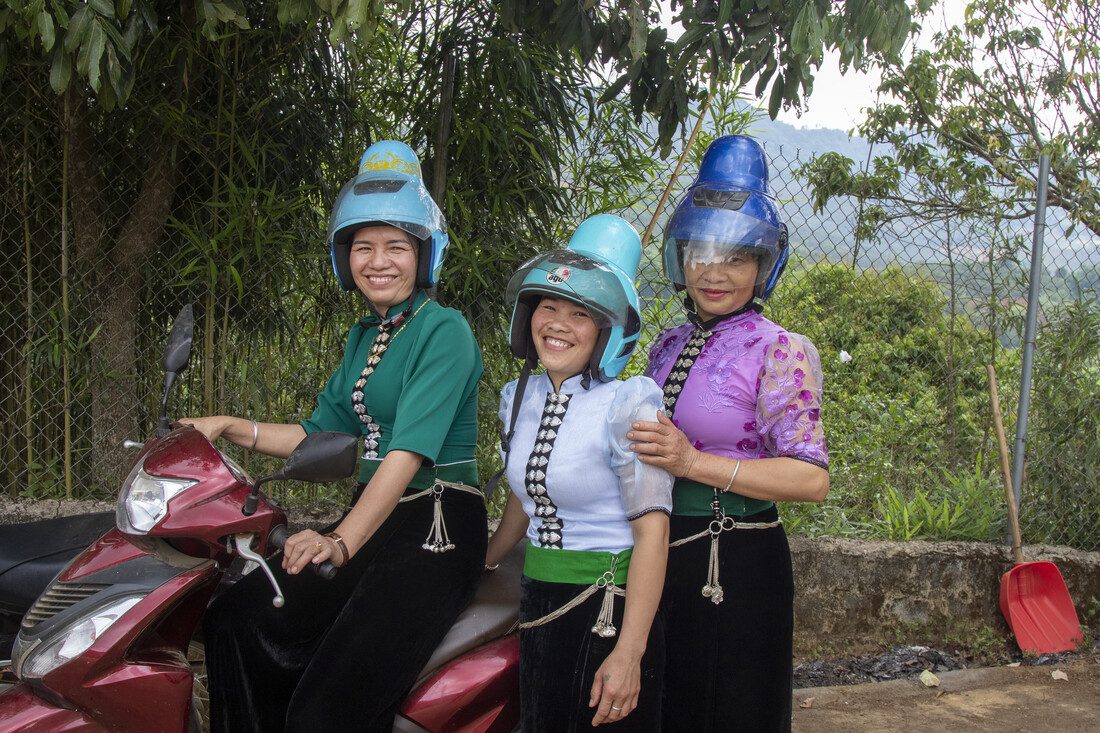

Lo Thi Nuoi (left), Cam Thi Hien, and Lo Thi Hop, members of the Ara Tay Coffee Cooperative, prepare to ride their motorcycles to make deliveries around Son La. Laura Noel/CARE
Binh, her family, Mon, and the rest of the Ara Tay team are helping the Son La community adapt its ancient traditions to fit today.
Binh’s husband and father often stay behind now to care for the baby as Binh motors off to work. On her head is what’s also now an everyday sight in Son La—a new motorcycle helmet, specially made for Thai women, with extra room on top for that high bun.



